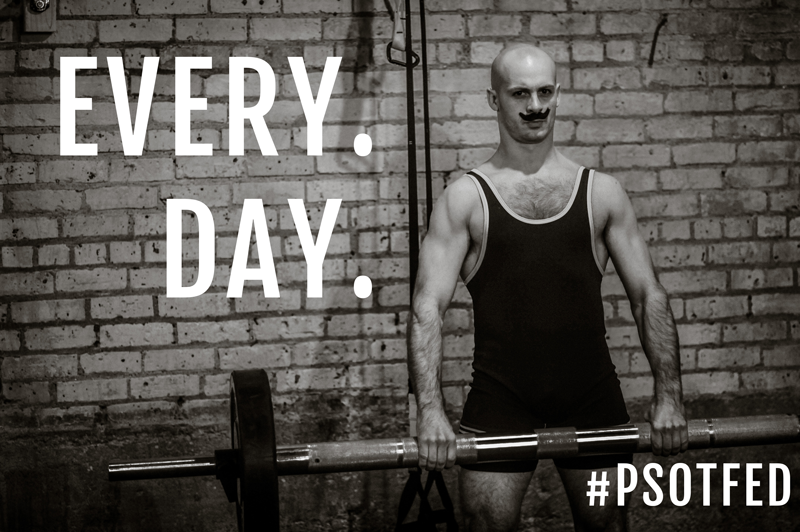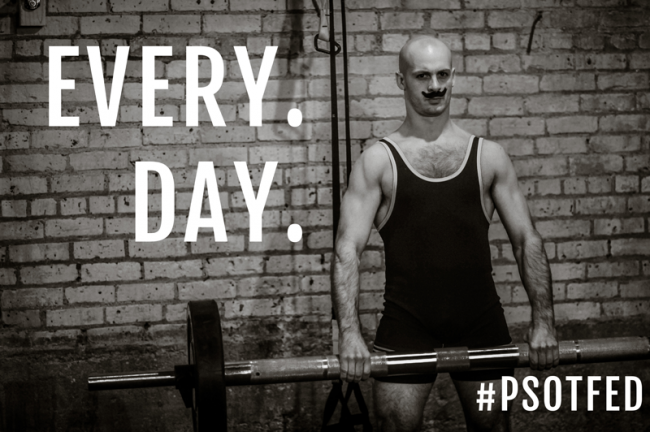
Getting hurt in training is the pits. Besides the obvious discomfort of getting injured itself and experiencing pain, those of us who train because we love seeing the progress are doubly insulted by the halt a training injury puts to our progress for a while. It’s frustrating, and most of us will do anything we can to avoid it, especially once we’ve been there and realized we’re not invincible.
One of the big promises made to us in Fitness™ is that if you do things with proper form and you do them correctly you won’t get hurt. Well, I think anyone who has been around this game for any length of time knows that it just isn’t true. In theory doing things correctly might reduce your chances of injury, but in reality it just doesn’t seem to play out that way. Sure sometimes someone is doing something horrendously wrong and it leads directly to injury but more often than not we see cases of someone doing something “sorta wrong” and causing no problems at all even over a long period, or someone doing things perfectly right and getting hurt anyway.
Furthermore if it were enough to do things “right” then my colleagues and friends who are the absolute best of the best coaches in the space should be immune to getting hurt. These guys and gals are experts at coaxing great form out of people, they certainly can apply it to themselves.
This lack of the golden promise of good form curing all has led to an entire sub-niche of fitness products being sold – products that are primarily promoted as injury prevention toolkits. It seems like every two or three years a new certification or course or philosophy comes around that promises to make injuries a thing of the past for yourself and for your clients. FMS, Clubbells, Z-Health, PRI, FRC and so on and on and on and on.
Every single one of these systems is predicated on the same idea:
“If you do this, this, and this you won’t get hurt.”
Obviously there are varying levels of complexity to the process, and each one has a unique way of laying out their system of heuristics for what to do and what not to do but the idea is always the same. Do these things to prevent injury.
Yet…….. folks are getting hurt anyway.
What gives?
I’m not saying these systems are entirely worthless, but they fail to deliver on the big promise and people are spending a ton of time and money chasing the next big thing.
It’s my contention that it’s not A) with what form or how you perform movements that leads to injury nor B) what preventive or pre-hab drills or hoops you jump through that prevent injury.
We get hurt because we apply a stress that the body – in that moment – wasn’t able to handle.
In other words, it doesn’t matter prehab or rehab you did before and it doesn’t matter how good or bad, relative to a textbook, your form was. No matter what you did or didn’t do before if you did that movement on that day you were going to get hurt.
Disheartening right? It’s totally out of your control and avoiding injury is hopeless, it’s the (bad) luck of the draw, right?
Well, no, and that’s where I think everyone has been missing the forest for the trees.
What’s missing is a feedback loop that can help you determine which stresses the body is perfectly ready to take on, resolve, and adapt to and which stresses are too far out of the range of limits in that moment. Of course this changes day to day and minute to minute based on all the various stressors that are applied in training or in life.
To date I have not found a more effective strategy than using biofeedback testing to determine what is in or out on a particular day.
Look, the premise is really simple, and it’s not unlike going to the physical therapist after an injury and having them check out your range of motion and strength and adjusting what you’re recommended to do or not do. This is just much, much faster and can happen in real-time with your training.
You simply take an assessment of where the body’s state is right now using range of motion. As I’ve explained before, toe touch works really well for this for most people. Then you do an unloaded version of the exact movement that you’re testing – let’s say a squat. Finally you check your range of motion again to see if it’s better, the same, or worse.
If it’s better, then carry on with your training, adding more weight and testing along the way.
If it’s worse – it’s my experience that you are at a much, much higher risk of injury and it would behoove you not to do that movement that day.
It’s hard to convey how incredibly effective this protocol has been for myself, my clients, and the now thousands of people I’ve taught it to. Here’s something I have heard in the past five or six years, but astonishingly rarely: “I don’t know what happened, everything was testing well and I got hurt.” Here’s something I have heard more times than I would like:
“It didn’t test well, but I really wanted to do it anyway, and on the fourth rep I got hurt.”
Damnit. Your body tried to tell you that it wasn’t a good idea, it gave you a measurable form of feedback that what you just did made your state discernibly worse, and you ignored it pushed forward anyway and paid the price.
Even if you’re not biofeedback testing, you’ve probably experienced a situation where something felt “off” or not quite right and sure enough you end up with an injury, or you just feel like crap after a workout – instead of feeling better like you should!
It shouldn’t happen, and it doesn’t have to happen. I believe you can leave the gym better every single time you train, if you just add this one extra step into your training.
You don’t have to change your program wholesale, and you don’t have to make major changes to how you train. Just add testing in, and when something doesn’t test well make some tweaks to it until you find something that does. It’s that simple.
In case biofeedback testing is new to you, here’s a video walkthrough that will be helpful:
It’s not the movement. It’s not how you do the movement. It’s not what you did before the movement. Good and bad, it’s how we respond to the movement that matters.





